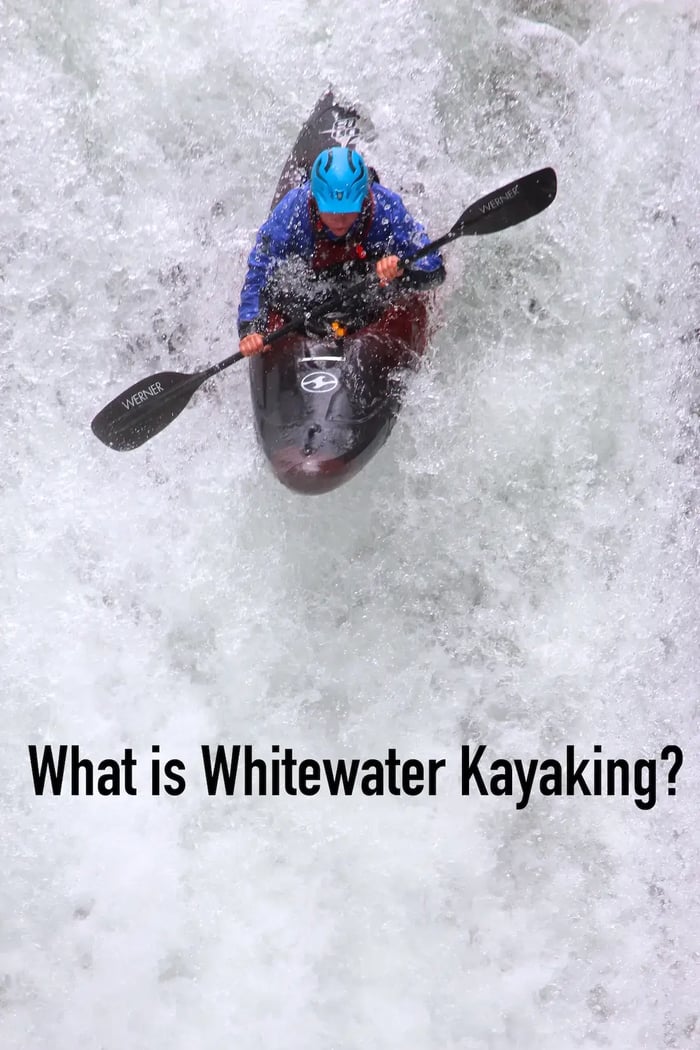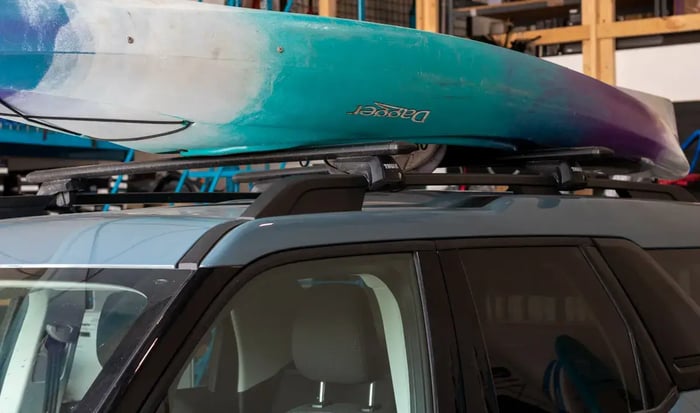What is whitewater kayaking? If you’re looking to get a better understanding of the activity, and a better idea if this is the sport for you, then this is the blog/article (blarticle?) for you.
If you’ve never read one of my blarticles before, my name’s Koby. I’m one of the AQ Outdoors and Aquabatics Ambassadors, and I’m at least half qualified to answer this question. So, what is whitewater kayaking?
Whitewater kayaking is the activity of paddling a kayak on whitewater.
If that definition hasn’t helped you at all, despair not -- it's not intended to, but rather a place to start. Adding some subjectivity, whitewater kayaking might be better defined like this:
Whitewater kayaking could be the most fun form of recreation you do during your brief existence. Using a kayak in the dynamic environment of moving water provides a unique experience that can range from floating down your local river to dropping waterfalls or surfing standing waves. The sport attracts a wide range of people, from those searching for a casual adventure down their local river to those searching for the thrill of challenging and consequential whitewater. And despite how personal experiences may vary, almost all kayakers would agree that whitewater is a powerful catharsis for the woes of this world.
If that grabbed your attention, read on. What follows is an invaluable discussion breaking down many mysteries and misconceptions of whitewater kayaking any potential paddler will benefit from.
Whitewater Kayaking
What is Whitewater?
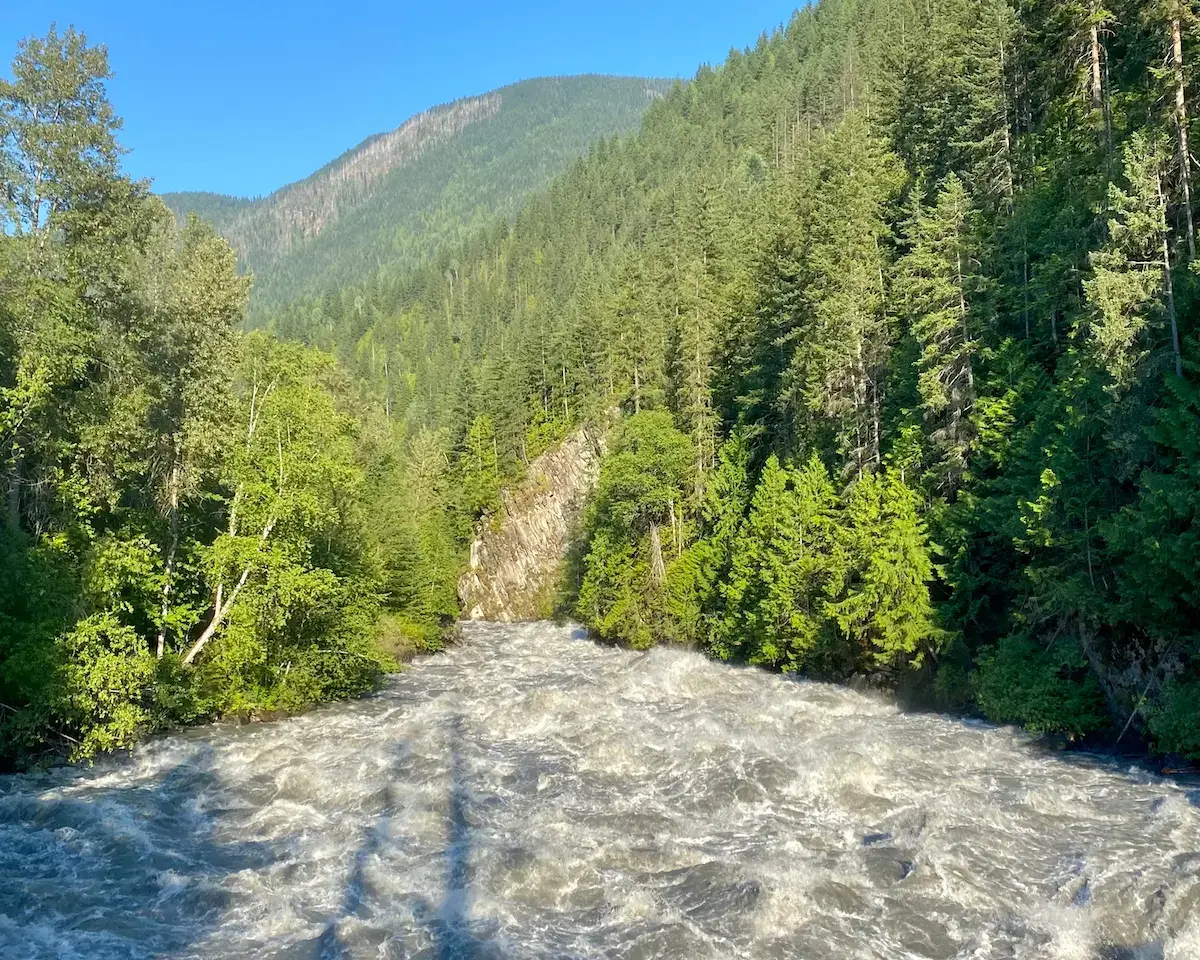
Whitewater
Whitewater simply means turbulent water. When water becomes turbulent it churns and mixes with air, producing its namesake white appearance. For the most part, whitewater is created as rivers flow downhill over boulders, through constrictions, or over drop-offs. However, whitewater can also be found in some fast-flowing tidal passages or anywhere there’s flowing water.
Whitewater Intensity
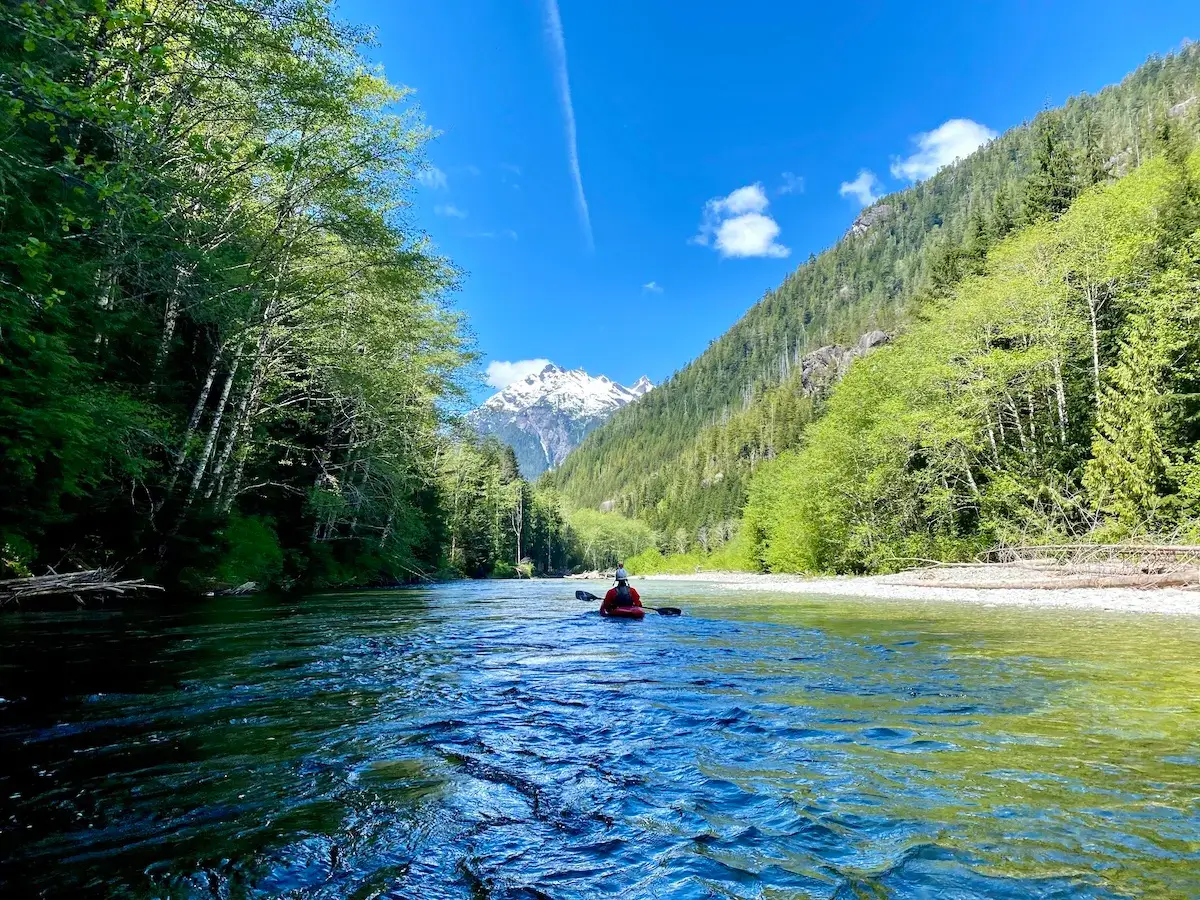
Class 1 (Gentle River)
The intensity of whitewater varies greatly: from little waves and ripples on a gentle stretch of river, to waves multiple metres high and other river features that can be as large as a small house.
Because whitewater has such a wide range of intensities, it is easy to pick and choose your whitewater adventure. For example, a beginner can start on gently flowing water, find their comfort level and then decide if and when they want to step up to more challenging and larger stretches of river. The intensity of the experience is really up to the paddler.
International Scale of River Difficulty

Class Five
To keep track of the intensity of a section of river or an individual rapid, river people have developed an international scale that rates rapids by both their difficulty and danger.
The scale begins at Class I (which encompasses flat but moving water) and tops out at Class VI, which is used to denote rapids that are not paddleable (most often due to unavoidable, life-threatening features). For more information, check out International Scale of River Difficulty.
Most beginners start on Class I and II, and gradually work their way up to harder whitewater.
What is a Whitewater Kayak?

Kayaks are watercraft that are paddled with a two-bladed paddle from a seated position.
A whitewater kayak is a kayak that was designed specifically for the rigours of whitewater, which involves whitewater specific shapes, outfitting, and construction materials. For example, whitewater kayaks are much shorter and more maneuverable than regular kayaks, have outfitting which is designed to give a paddler control of the kayak in rapids, and are made with thick durable plastic that can withstand the forces of whitewater such as impacts with rocks.
It’s highly inadvisable to use a kayak not built for the rigours of the river on whitewater as it poses a significant safety risk as well as high likelihood of damaging and/or losing your equipment.
Whitewater Kayak or Whitewater Something Else? Different River Crafts
The #1 mistake people make when entering the whitewater community is confusing the different crafts that are used to paddle whitewater. The most common whitewater craft include rafts, canoes, SUPs, inflatable kayaks and hardshell kayaks. Once you understand their differences, telling them apart is simple.
Rafts

Rafts on a Commercial Raft Trip
Rafts are typically large, inflatable boats made of thick and durable material which is designed to withstand the abuse of a river.
Modern rafts are all self-bailing crafts -- any water that splashes in automatically drains back out. Rafts are the busses or barges of the whitewater world and are most often used for taking large numbers of people (or gear) down a river on commercial recreation trips.
Canoes
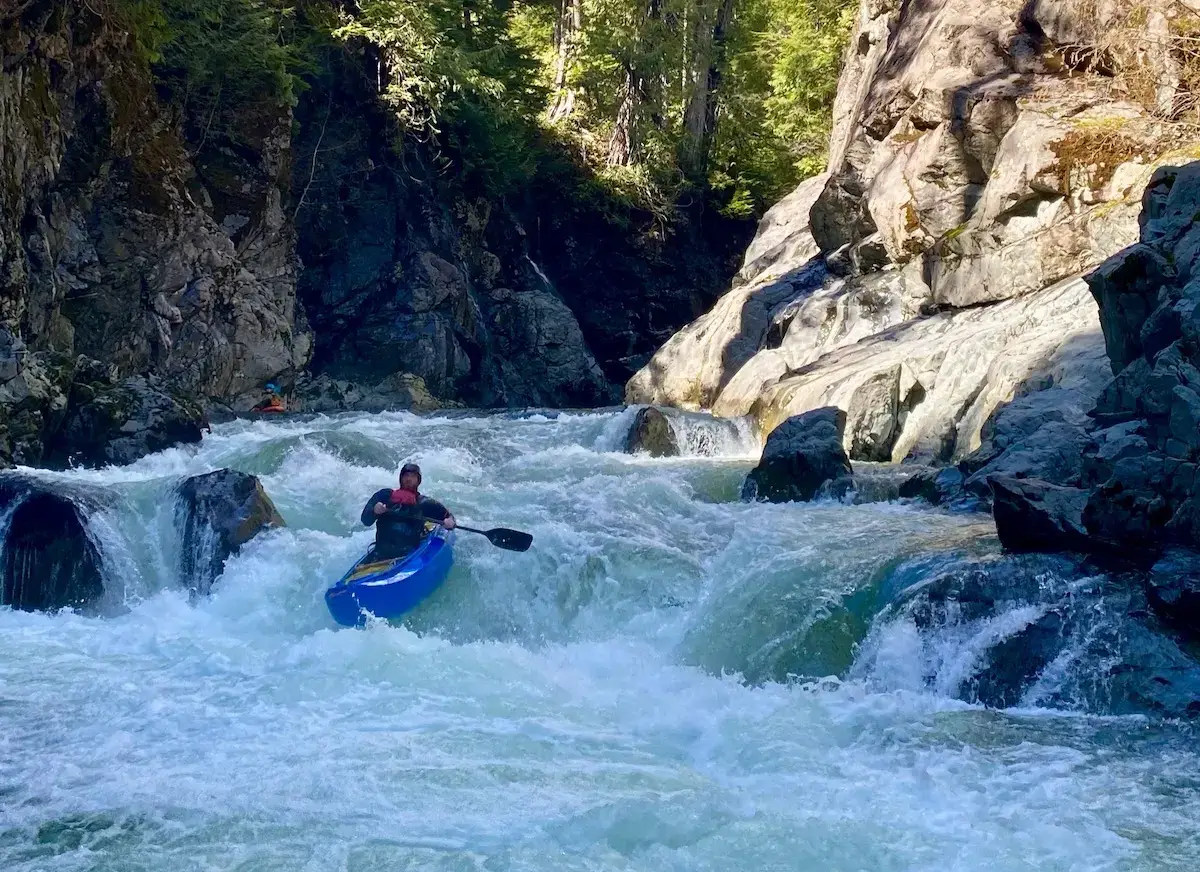
Whitewater Canoeing
Canoes are non-inflatable boats which typically seat one or two people and are paddled with a single-bladed paddle.
In whitewater canoes the paddler is seated in a kneeling position with their knees on pads on the bottom of the canoe. Most canoes have open tops which allows water to splash in but requires bailing or a bilge pump. However, some whitewater canoes have sealed decks, in which case they are easily mistaken for a kayak.
The two main differences between a canoe (sealed or otherwise) and a kayak is the seating position (canoes = kneeling; kayaks = seated) and the paddle type (canoe = 1 blade; kayak = 2 blades).
Inflatable Kayaks
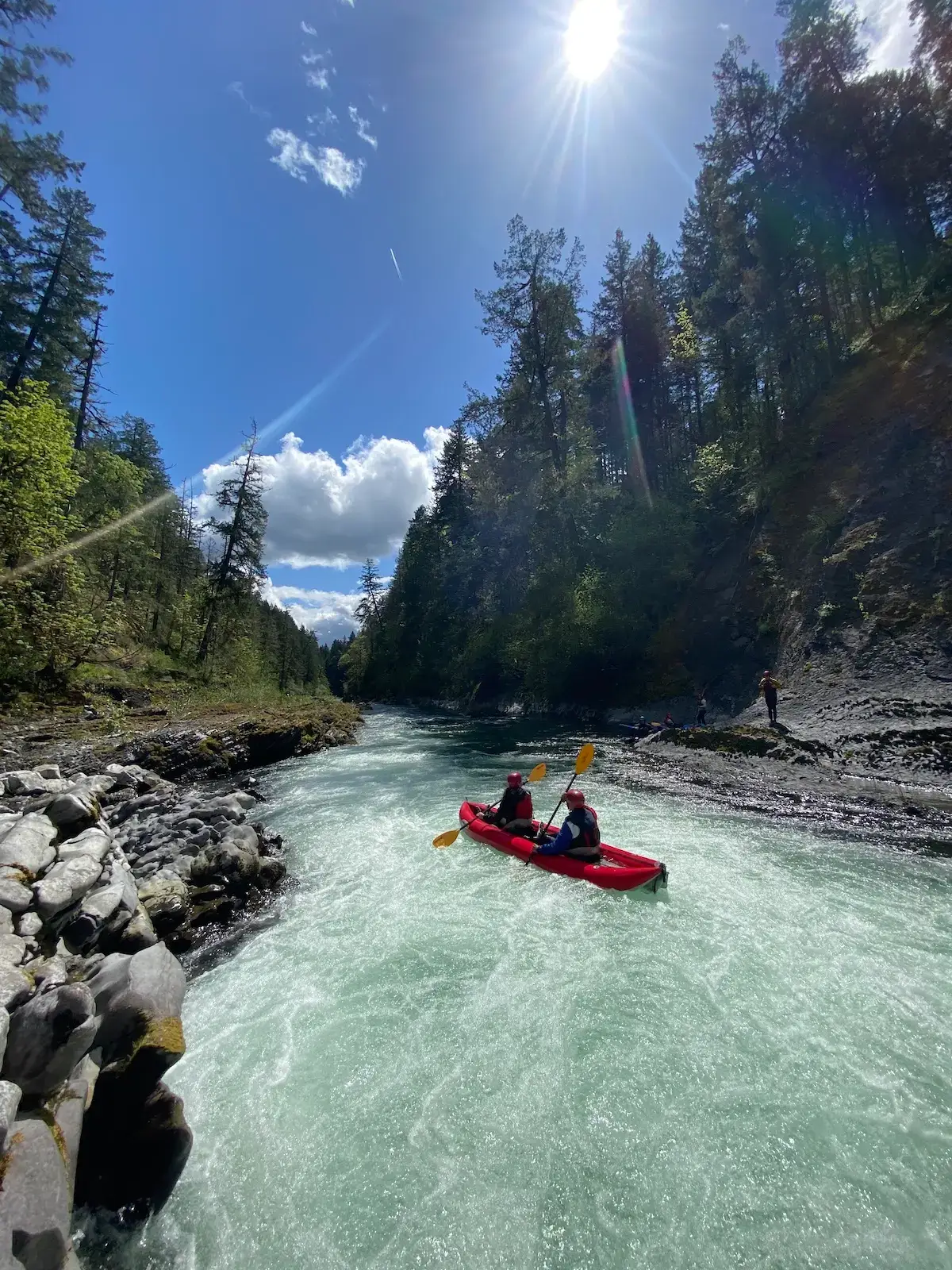
A Two Person Inflatable Kayak
Inflatable kayaks (IK’s for short) are exactly as they sound: kayaks which are made of a soft material that is inflated to hold their shape.
A large difference between IK’s and hardshell kayaks is that a paddler sits on top of an inflatable kayak, versus inside of a hardshell kayak. What that means for paddling whitewater is when an IK flips upside down, the paddler falls into the river. Then they simply re-right the flipped IK and climb back in.
However, someone in a hardshell kayak who flips upside down has the opportunity to re-right themselves without ever leaving the kayak using a technique called rolling, which is highly advantageous on challenging whitewater. IK’s are also significantly less maneuverable than hardshell kayaks, which limits them to mostly gentler whitewater.
Hardshell Kayak
When people say “whitewater kayak”, 99% of the time this is what they mean. A hardshell kayak is a kayak made with rigid plastic within which you sit. A “whitewater kayak” is simply a whitewater specific hardshell kayak.
Creature Craft
Blasphemy of the whitewater world, probably best if you just Google it...
Whitewater Stand Up Paddleboard

AQ Ambassador Kimberly Kenyon shredding on her Whitewater SUP
Stand up paddleboarding is becoming increasingly popular on whitewater. Undoubtedly challenging, but also rewarding, many companies are now making whitewater specific SUPs, and more people are challenging rapids on SUP every year.
Disciplines of Whitewater Kayaking
Whitewater kayaking can be further broken down to disciplines in the sport. Much like mountain biking where you have downhill, cross-country, enduro, dirt jumping etc., whitewater kayaking has playboating, slalom, river running, creeking, big water and expedition.
These disciplines are extremely ambiguous with much overlap, but they’re useful for distinguishing the different styles of whitewater kayaking a paddler enjoys or might enjoy.
Playboating
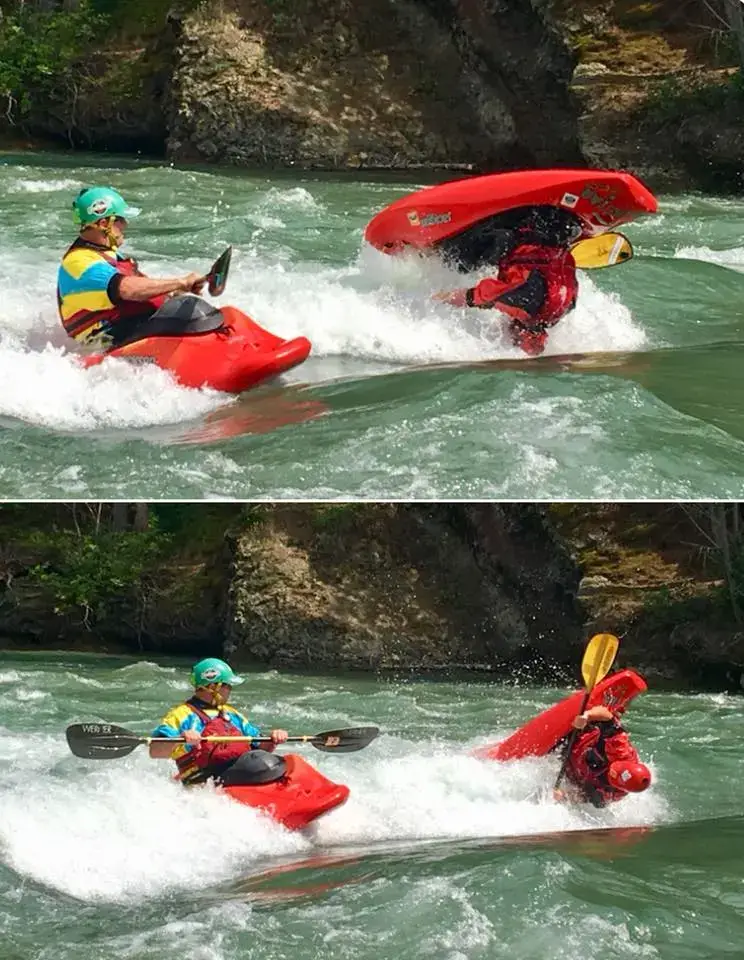
Playboaters be Playboating
Surfing standing waves and playing in river hydraulics, playboating is ultra-technical and makes the absolute most of individual river features.
For example, a playboater might go out to a specific wave and spend the entire day playing and working on tricks on the same wave without ever paddling downstream on the river, much in the way a skateboarder goes to the skatepark. Because of the large focus on performing tricks (spins, loops and cartwheels to name a few), playboating is sometimes also called freestyle.
One of the best things about playboating is it provides the opportunity to build skills and have fun on what is most often a relatively safe river environment.
Slalom

Haley Daniels, Canadian Olympian navigating the gates
Slalom is the type of whitewater kayaking you might have seen in the Olympics. Using long and fast kayaks, paddlers race down a short stretch of a natural or man-made river while passing around and between gates that provide an added challenge to navigation.
Like playboating, it is extremely technical and a great way to build river skills on easier whitewater. However, slalom courses (rivers/rapids with gates set up to use) are not prolific. This makes it one of the least widespread whitewater kayak disciplines in North America.
River Running

River Running in Revelstoke
Paddling downstream and having as much fun as possible whilst doing it!
River-running is a mixture of playboating and creeking/big water. Typically reserved for less extreme sections of river, a day of river running involves paddling a section of river with a focus on fun, and little else.
River running is the most broadly practiced and widely enjoyed discipline that every whitewater kayaker takes part in from time to time.
Creeking

Creeking in Chile
Running challenging and potentially dangerous whitewater, creeking involves using a kayak to challenge the rapids of steep and often small (low volume) pieces of whitewater.
Comparable to downhill mountain biking, creeking is arguably the most extreme whitewater kayaking discipline and requires skill and risk tolerance. A day of creeking might involve going out and dropping off a waterfall, or paddling down a rushing torrent of whitewater where any mistake can have consequences.
Despite the inherent risks, a skilled paddler with good judgement and river safety awareness can mitigate the risk, making creeking an exciting yet reasonable activity.
Big Water
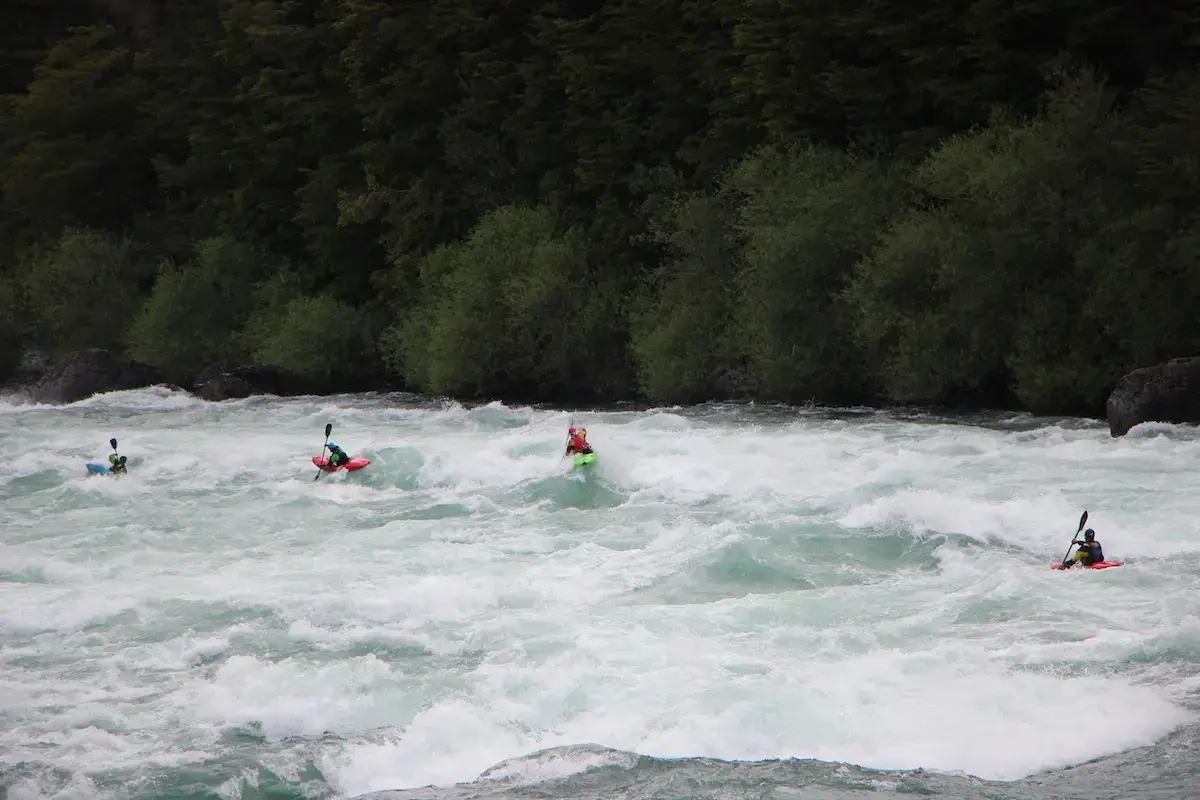
Big Water Kayaking
High volume rivers with waves bigger than cars and hydraulics bigger than houses provide an exciting environment for whitewater kayaking.
Big Water is quite simply paddling your whitewater kayak on high volume rivers (high volume = large rivers that have a lot of water in them; think Fraser, Colorado, Amazon River). While high volume rivers have the potential to be challenging and dangerous, big water extends across all river intensity scales from gentle (Grade I) to extreme (Grade 5).
Often one section of a high-volume river might be extreme but another section of the same river quite gentle. One of the best things about big water is it often provides a relatively safe environment for beginner and intermediate whitewater kayakers to experience the true power of rivers.
Expedition

Hiking Kayaks into the River on a Multi-day Expedition
Getting off the beaten track is the name of the game when it comes to expedition kayaking.
This often involves hiking your kayak into rivers where there are no roads to access them. It also involves loading your kayak up with everything you need to survive in the wilderness for days on end, then embarking down the river.
Lastly, expedition whitewater kayaking might be chasing the rivers which have never been, or are at least very seldom, paddled. Expedition kayaking is for the most adventurous soul who loves a challenge and for whom paddling the regular runs does not suffice.
What is Whitewater Kayaking Summary

Whitewater is Love...
Making it to the end of the blarticle, I hope you have a better idea of what whitewater kayaking is and is all about.
The first important take-away is that whitewater kayaking is the sport of taking a kayak down whitewater, but there are plenty of other crafts which are suited for whitewater.
The second important take away is that whitewater kayaking does not have to be extreme, but rather encompasses a broad range of disciplines which all appeal to different persons depending on the type of experience they are seeking.
If, after reading this, you’re feeling inspired to try whitewater kayaking for yourself, the best thing to do is to take an introductory whitewater lesson with a reputable provider. They’ll have the equipment you require and lessons which are designed to show you the magic of whitewater kayaking in a safe and fun environment. Like many sports, the initial time and money investment can seem daunting, but the reward of being able to explore rivers for yourself is priceless.
AQ Outdoors Whitewater Kayaking Courses
I wish you the best on your budding whitewater kayaking adventure, or at the very least, hope you have learned a little bit about the sport I so love.
Happy Paddling,
- Koby
Other Whitewater Kayaking Posts
Beginner Whitewater Kayaking: Complete Guide
Whitewater Kayak Paddle Complete Buying Guide
AQ Outdoors Contact
Edmonton: (p) 780 463-4892 (e) info@aquabaticsedmonton.com
Calgary: (p) 403 288-9283 (e) info@aqoutdoors.com




















































